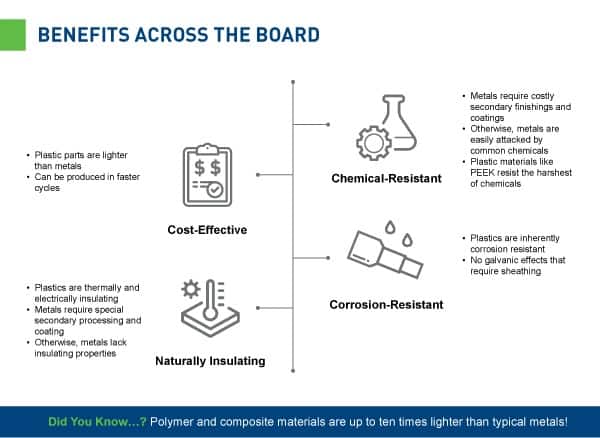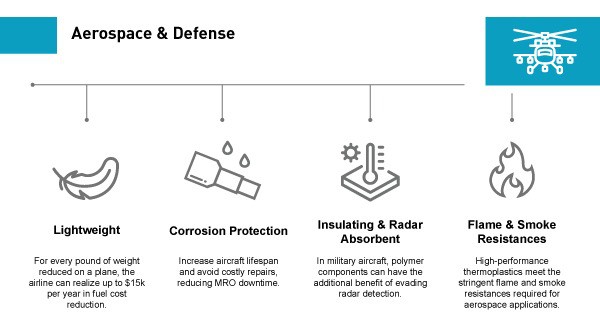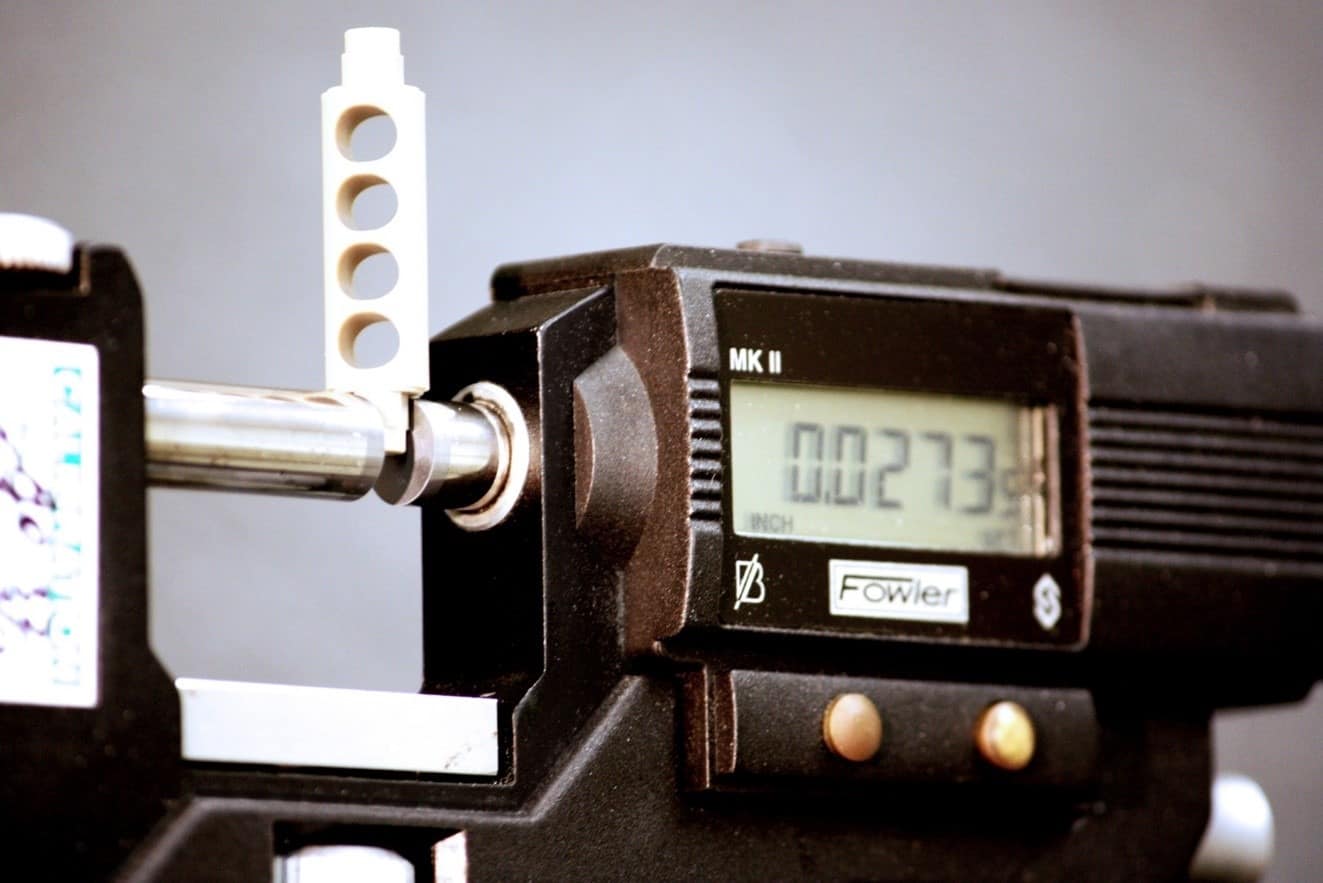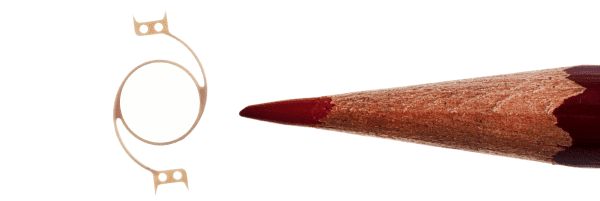An Informational Brief on Polymer Machining
Nylatron® is Quadrant’s trademark name for a whole family of wear resistant and low friction Nylon polymers, most of which are filled with molybdenum disulphide (MoS2) powder. What makes this material popular for industrial and bearing applications is its mechanical properties and impressive wear-resistance.
In our latest machining guide, we discuss what goes into machining Nylatron, and how its considerations differ from other manufacturing options such as metal machining, injection molding, and 3D printing.
Machining Nylatron: A Plastics Guide shows you how AIP Precision Machining approaches this material and its machining process. To start, we’ll explain the difference between machining Nylatron, a thermoplastic, and machining thermosets.
Machining Thermoplastics vs Thermosets
We’ve already said that Nylatron is a thermoplastic, but what does that mean exactly?
All polymers can more or less be divided into two categories: thermoplastics and thermosets. The main difference between them is how they react to heat. Thermoplastics like Nylatron, for example, melt as heat is increased to the material’s melt point, while thermosets remain “set” once they’re formed regardless of heat; rather, they simply char or burn. Understanding the technical distinction between these types of materials is essential to CNC machining them properly.
What type of thermoplastic is Nylatron in particular? As part of the Nylon family, it is a semi-crystalline, engineering thermoplastic polyamide.
Properties & Grades of Machined Nylatron
Nylatron’s main characteristics include a high mechanical strength, stiffness, hardness and toughness. As a semi-crystalline thermoplastic, Nylatron has good fatigue resistance as well. With excellent wear resistance and good electrical insulating properties, it’s not surprising that this material is often used for specialized industrial applications. One feature that’s of special interest to us at AIP is Nylatron’s ease of machinability with high precision. However, it’s also easy to extrude and fabricate.
Like Nylon, Nylatron is resistant to chemicals and hydrocarbons; the latter characteristic is especially useful in the oil and gas sector. Add in abrasion resistance, low coefficient of friction and outstanding corrosion resistance and you have a long-wearing material that can serve as a cost-effective replacement for metals and rubber.
Some of the Nylatron grades we regularly machine at AIP include:
Nylatron GSM PA6
Also known as MoS2-Filled Type 6 Nylon, this filled Nylatron grade has improved strength and rigidity over other Nylon variants, including a lower coefficient of linear thermal expansion. This is because the MoS2 (molybdenum disulphide) enhances the bearing and wear of the material without compromising its impact and fatigue resistance. This grade is often used to replace cast iron industrial applications, as lightweight Nylatron can both reduce weight and eliminate corrosion. As a result, it’s commonly used for gears, bearings, sprockets and sheaves.
Nylatron GF30 PA66
This extruded grade of Nylon 6/6 is 30% glass fiber reinforced and heat stabilized to provide improved creep resistance and dimensional stability as well as enhanced strength, stiffness and abrasion resistance. It has almost double the tensile strength of unmodified Nylon 6/6, with an elongation rate of about 1/6th that of unmodified Nylon 6/6. It has good resistance to high energy radiation (such as X-rays or gamma- rays) and allows for higher maximum service temperatures when compared to other grades.
Nylatron LIG PA6
Nylatron LIG PA6 is an internally lubricated Nylon grade that can perform up to ten times longer than its unmodified counterpart thanks to its lubricated additives. It strikes an optimal balance of strength and toughness. This makes it work well for industrial and consumable applications including gears, industrial bearings and wear pads.
Nylatron NSM
Nylatron NSM is the highest wear resistant thermoplastic available. As a self-lubricating grade of Nylon 6, it’s designed to outperform other wear grade materials and give long-lasting part life for applications that otherwise experience continuous wear and damage, such as bearings and wear pads. Other benefits of Nylatron NSM are its ease of machining, corrosion-resistance and noise reduction.
Nylatron GSM Blue PA6
Named for its dark blue color, Nylatron GSM Blue PA6 is the first cast Nylon to combine MoS and oil for the load capacity of Nylatron GSM PA6. This material performs exceptionally in higher pressures and at low speeds of up to 40 fpm. It’s preferred over Nylatron GSM PA6 for slide pads, thrust washers and trunnion bearings due to its 20% lower coefficient of friction, 50% greater limiting PV and its lower “k” factor.
Nylatron 703XL
High precision applications machined from Nylatron 703XL benefit from its near-zero level of “stick-slip,” which eliminates chatter to allow for an incredible level of control. Nylatron 703XL possesses a good balance of strength and toughness, as well as good mechanical and electrical properties. This grade works well in critical bearing applications for construction and production equipment industries.
Nylatron MC901
Nylatron MC901 is a heat-stabilized Nylon 6 grade that offers long-term thermal stability to 260 °F. This material has high toughness, flexibility and fatigue resistance. It is used in many bearing and structural applications, its most popular being gear wheels, racks and pinions.
Machining Nylatron
Annealing Nylatron
The process of annealing and stress-relieving Nylatron reduces the likelihood of surface cracks and internal stresses occurring in the material. Post-machining annealing also helps to reduce stresses that could potentially contribute to premature failure. We recommend stress relieving Nylons in a nitrogen environment.
Machining Nylatron
As stated earlier, Nylatron precision machines easily. This makes it a popular choice for machined industrial components that require precise, tight tolerances. We advise using HSS cutters instead of carbide on Nylatron for its surface finish. Stringer or chip removal during machining of Nyaltron is critical in order to maintain tolerances and surface finish.
When under high humidity, or while submerged in water, Nylons can absorb up to 7% by weight of water. This is important to keep in mind for machining Nylatron and designing applications of the material, as this effect can result in dimensional changes and a reduction of physical properties. There are proper design techniques that can compensate for this, so be sure you’re working with a Nylatron expert.
We also suggest non-aromatic, air-based coolants to achieve optimum surface finishes and close tolerances. Coolants have the additional benefit of extending tool life as well.
Preventing Contamination
Contamination is a serious concern when machining polymer components for technically demanding industries such as aerospace. To ensure the highest level of sanitation down to the sub-molecular level, AIP Precision Machining designs, heat-treats and machines only plastics, with any sub-manufactured metalwork processed outside our facility.
Nylatron Machining Guide: Supportive Information
Nylon Variants Guide
Chemical Resistant Materials Guide
Energy Sector Materials Guide






